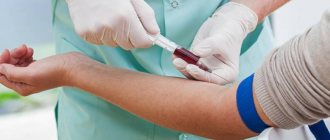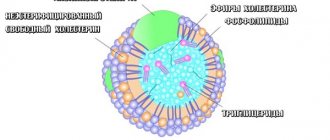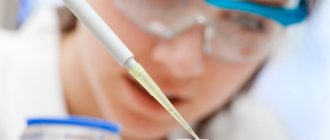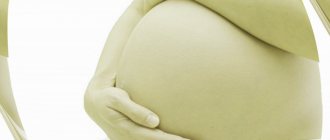When is OAC prescribed?
A specialist prescribes a blood test to identify an infection in the body (including viral), inflammation or neoplasm that is malignant in nature. Thanks to a general clinical analysis of plasma, it is possible to assess the effectiveness of the prescribed and administered treatment for the patient.
OAC is also mandatory for pregnant women.
Summarizing the above, we can identify the main reasons for taking a clinical blood test:
- Prevention . It is carried out once every 6 or 12 months. Allows you to identify the disease at the initial stage of its development.
- Diagnostics . The work of the heart, lungs, kidneys, and liver is studied. The infection of the body is determined.
- Study of blood pathologies . For example, anemia and its type are determined and, if necessary, an additional study is prescribed, a sterile puncture from the sternum.
- Control . Hemoglobin and platelet count in pregnant women.
The primary general analysis does not have to be taken on an empty stomach. This requirement is only when taking a biochemical and detailed blood test.
Decryption features
According to the results of a blood test, some indicators may be increased or, conversely, decreased.
In addition, a clinical analysis of blood fluid can reliably show the presence of parasites such as helminths in children’s bodies.
There is a special table of blood fluid indicators in their normal state, and the values of all the main indices obtained during the study are compared against it.
The laboratory especially carefully studies lymphocytes, which are the main cells of the immune system in children.
READ Hemoglobin norms in children of different ages
Lymphocytes are primarily designed to produce specific antibodies that can effectively fight cells harmful to the body.
Depending on the age of the baby, lymphocytes may change their normal values.
Lymphocytes reach their highest levels in one-year-old children, then they begin to gradually decrease their values, and by adulthood their percentage ranges from 25 to 35.
Monocytes are also the most important elements in the blood of children. Monocytes are the smallest cells, the so-called “white blood”.
Monocytes in the blood fluid perform the function of absorbing a wide variety of harmful microorganisms.
Monocytes are expressed as a percentage; on average, their norm in children ranges from 2 to 12%.
If both of these indicators are elevated, this indicates that some pathological processes are occurring in the baby’s body.
Video:
Also, in the process of examining the baby’s blood, the quantitative characteristics of red blood cells are carefully checked in the laboratory.
This essential element of blood fluid is responsible, first of all, for the delivery of oxygen to all cells and internal organs.
The analysis also determines the level of hemoglobin, which is part of red blood cells.
The color index of the blood fluid is carefully assessed, which changes somewhat with increasing age of the child.
An index such as ESR is of great importance for determining the various types of pathologies that can occur in a child’s body.
Knowing the value of ESR, it is possible with a high probability to trace the dynamics of the course of a particular disease, in addition, it can be used to reliably establish a diagnosis.
Video:
In addition, platelets and some other indices are checked in children's blood fluid, which may be of interest to the attending physician.
READ Enzyme Excess - Alkaline Phosphatase Elevated
If the blood test shows a poor result, the doctor may prescribe additional diagnostics to clarify the situation.
Should I take a general blood test on an empty stomach or not?
The procedure is carried out in the morning and always on an empty stomach, otherwise the indicators may not be entirely accurate. During the day, under the influence of various factors (food, physical activity), blood counts change. That is why doctors recommend taking tests in the morning and always on an empty stomach.
To get an extremely accurate result you should:
- Food on the eve of the test can be taken until 20.00.
- Fatty foods and alcohol should be excluded from the diet 3 days before the test.
- Refrain from smoking, tea, coffee, sugar, because The indicators may be distorted, which will require the analysis to be repeated.
- Stop taking any medications. If this is not possible, you should consult a doctor.
- You should not take a blood test after procedures such as massage, x-rays, ultrasound, etc.
It is advisable to follow the described recommendations within 24 hours before taking the tests.
The only thing you can do immediately before taking the test is drink still water.
As for infants, the preparation conditions remain the same - in the morning and on an empty stomach. If the situation is urgent and requires quick results, then these recommendations can be neglected.
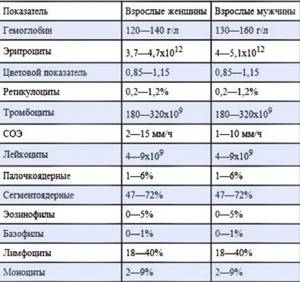
What else you need to know about taking a general blood test
If there is such a possibility, then blood should be donated before a course of taking any medications is started - or 10, or preferably 14 days after it is completed. In any case, it is advisable to allow at least a week to pass between donating blood and taking any last medication. This will significantly affect the validity of the result obtained. In a situation where the doctor prescribing the study does not know that the patient is taking any medications, he needs to be informed about it.
Since a general blood test in Moscow is taken on an empty stomach, it is important to provide for the opportunity to eat afterward.
Doctors confirm that regular preventive examinations are the key to the disease being detected at an early stage, and proper preparation for the test is the key to an accurate result. But both statements are true only if the tests are taken in a modern laboratory with good equipment.
Only a doctor who has all the information about the patient’s condition can recommend a general blood test. Under no circumstances should diagnostic results be used for self-diagnosis, much less self-medication, as this is fraught with unpredictable consequences.
Complete blood count: what is studied
Let's consider what is determined during OAC and the main meanings of the data obtained.
Red blood cells
Increased cells indicate:
- oxygen starvation,
- disturbance of water-salt balance or dehydration in the body; erythremia;
- heart disease (after suffering a complex form of infectious disease);
- impaired functioning of the adrenal cortex;
- overdose of glucocorticosteroids.
A low hematocrit “speaks” of:
A good blood test: indicators, how to take them?
More than once in a person’s life he donates blood for diagnostics.
The material for this is taken from a finger or vein. In this case, various types of blood tests may be prescribed. These include biochemical, serological, general, detailed diagnostics and many other specific types. Each of these methods involves obtaining results. But only the attending physician has the right to judge whether a blood test is good or bad. The composition of any person’s blood includes a huge number of different types of cells. They are responsible for the proper functioning of the body. That is, in a normal state of health, the correct process of respiratory, protective and nutritional functions is carried out. If the number of any cells in the human body increases, then you should think about possible diseases.
Urine tests
The main method of laboratory diagnosis for kidney diseases remains urine testing. Kidney tests make it possible to judge both the general functioning of the organs of the urinary system and to identify specific symptoms of the disease.
To ensure that the test results are as reliable as possible, it is recommended to give urine after a little preparation:
- For 1-2 days, eliminate foods that can color urine (for example, beets, large amounts of carrots, smoked meats, pickled vegetables and fruits, sweets).
- During the same time, give up alcohol, coffee, multivitamin complexes, and diuretics.
- If you are constantly taking any medications, notify the doctor who referred you for testing.
- 24-48 hours before your visit to the laboratory, avoid heavy physical activity, baths, saunas.
Note! Menstrual bleeding in women, acute infectious process and hypertensive crisis can affect the result, and urine examination will be uninformative. It is better to reschedule the kidney examination and get tested after the condition normalizes.
You should donate morning urine that has accumulated in the bladder during the night's sleep. Before this, you should take a shower and perform thorough hygiene of the external genitalia. An average portion of urine is collected in a sterile container (it is better if it is a disposable container, which is sold in pharmacies): the subject needs to start urinating into the toilet, and then collect 50-100 ml into the container without touching the skin.
Urine collected for analysis is stored for 1.5-2 hours in a cool place. Later, the biomaterial is considered unsuitable for study.
General clinical examination of urine
OAM is a standard examination method that evaluates the physicochemical characteristics of collected urine and the presence or absence of pathological impurities in it.
The test transcript is presented in the table below.
| Index | Norm |
| Color | Straw yellow |
| Transparency | Transparent |
| Smell | Weak, unsharp |
| pH | 4-7 |
| Rel. density | 1012-1023 g/l |
| Protein | Not detectable / less than 0.033 g/l |
| Glucose (sugar) | Not detectable / less than 0.8 mmol/l |
| Ketones (ketone bodies) | Not defined |
| Bilirubin | Not determined |
| Urobilinogen | 5-10 mg/l |
| Hemoglobin | Not determined |
| Red blood cells | Husband. – single in f/z (field of view) |
| Women — | |
| Leukocytes | Husband. — |
| Women — | |
| Desquamated epithelial cells | |
| Cylinders | Not detectable / single in p/z (hyaline) |
| Salts | Not defined |
| Bacteria | Not defined |
| Pathogenic fungi | Not defined |
| Parasites | Not defined |
OAM allows you to create a general idea of how the kidneys work in the body. An increase in the level of leukocytes in the urine and the appearance of bacteria in it indicate the development of an infectious process. Red blood cells and a large number of casts suggest the acute stage of glomerulonephritis.
If the above parameters deviate from the norm, one can judge not only kidney disease, but also systemic disorders in the body. For example, the detection of glucose in the urine is a likely sign of diabetes, and a positive test for bilirubin can confirm the presence of obstructive jaundice.
Test according to Nechiporenko
Urinalysis according to Nechiporenko is a diagnostic method necessary for a detailed determination of formed elements in the urine - red blood cells, leukocytes and casts. It is usually used to identify a hidden infectious process, when it is difficult to judge the nature of the pathology based on the results of OAM. Generally accepted standards of analysis are presented in the table below.
| Index | Normal values |
| Leukocytes | |
| Red blood cells | |
| Cylinders |
Zimnitsky test
Urinalysis according to Zimnitsky is based on the collection of daily urine indicating the time of urination. Allows you to determine the density of urine excreted at different times (long-term, monotonous hypoisosthenuria - a sign of renal failure), the presence of perversion of urination.
